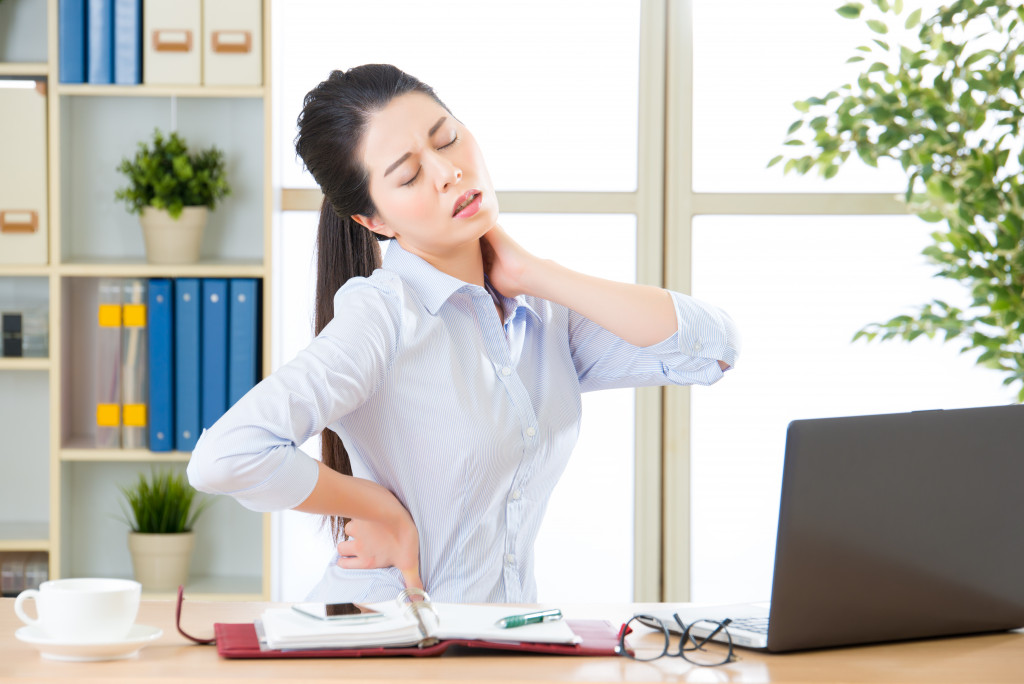You know how it feels: you’ve worked hard for about 30 minutes and then feel as if you cannot stand up a few minutes after. Your body aches all over. Sometimes the repetitive pattern is frustrating that you may desire to quit working out altogether.
Why do you feel sore, though? Well, it happens for a variety of reasons:
1. Micro Tears
When you exercise, your muscles are damaged on a micro-level. This is why they ache.
The muscle cells are made up of fibers wrapped in connective tissue (endomysium, perimysium, and epimysium). When you lift weights, run, or stretch, the force placed on the muscles stretches these fibers beyond their normal length, causing tears in the connective tissue.
This damage to the tissues is what will cause you to feel sore after a workout. The pain comes from your immune system’s inflammatory response to help repair them. It releases chemicals that enhance blood flow, bringing oxygen and nutrients to the injury site and white blood cells that remove cellular waste. This causes swelling and stiffness.
The degree of pain you are experiencing will depend on various factors. The first is your body’s level of experience. As a person engages in resistance exercises, their muscles become more conditioned to it, so they won’t feel as sore after the second or third time around.
However, this may not be true for everyone due to genetic predispositions and differences in muscle fibers, which dictate how fast the body adapts to exercise.
2. Fitness Level
Another factor that can influence how much you ache is related to your fitness level. People who are not fit tend to have less blood flow, which means insufficient oxygen getting into the muscle cells compared with those who are more conditioned. This means they will feel more aches and pains, especially if they push themselves too hard in the beginning when their muscles are not yet adapted to intensive exercise.
3. Lactic Acid Buildup
Lactic acid or lactate is a by-product of anaerobic metabolism. Anaerobic means “without oxygen,” This process often happens in muscle cells when they are not getting enough oxygen to produce ATP, the main energy source for our body.
During exercise, the demand for blood increases. If your cardiovascular system does not adapt fast enough, you will experience lactic acid buildup as your muscles begin to fatigue. Lactate can be cleared out of the muscle cells quite quickly, either with fresh supplies of oxygen or via other metabolic pathways, which do not require oxygen (anaerobic glycolysis). That’s why we feel so good right after hard workout sessions. Lactic acid levels have dropped back to normal!


4. Parts of the Body Worked Out
Another thing that may influence how sore muscles feel is what part of your body you’ve been working on because it affects how much stress and strain is placed on the muscles.
Muscles located at the back of your body, such as those around your shoulders and lower back, tend to get worked harder than those in front, like the biceps and abs, so they will often feel sorer since they are doing more work.
If you’re working out a whole group of muscles, then it’s likely those will feel the worst because your body isn’t used to such intensive exercise. This includes your legs after running or your chest and triceps after performing push-ups.
Can You Get Rid of DOMS (Delayed-onset Muscle Soreness)?
The soreness should go away within one to three days, but the discomfort can last up to a week, depending on how hard your muscles were pushed. If you are still feeling sore after this time, it’s recommended that you take a break until the next workout session so that your muscle tissues recover fully.
When recovering from sore muscles, focus more on stretching and light cardio than lifting weights. It will help speed up recovery by increasing blood flow to the muscles. Hydration is another factor because it flushes out the lactic acid buildup in the body, reducing pain and replacing all fluids used during workouts to replenish electrolytes.
Explore Cupping Therapy
Another way to deal with muscle soreness is cupping. Most often, athletes use a cupping therapy kit because it is very effective in relieving muscle soreness.
The micro-injuries that are left untreated impair normal cell functions. It can then cause further issues within the body that result in pain in the specific area and throughout the entire muscle group itself.
Cupping helps to remove excess fluid buildup as well as adhesions that may be preventing blood flow. Thus, oxygen can freely move throughout the body to promote fast healing of those torn muscle cells. In addition, cupping helps to stimulate blood flow so nutrients can be brought to the injured area.
Muscle soreness can lead to fatigue, but the good thing is it will disappear with enough recovery period. If it doesn’t, consider it as a sign to see your doctor.

